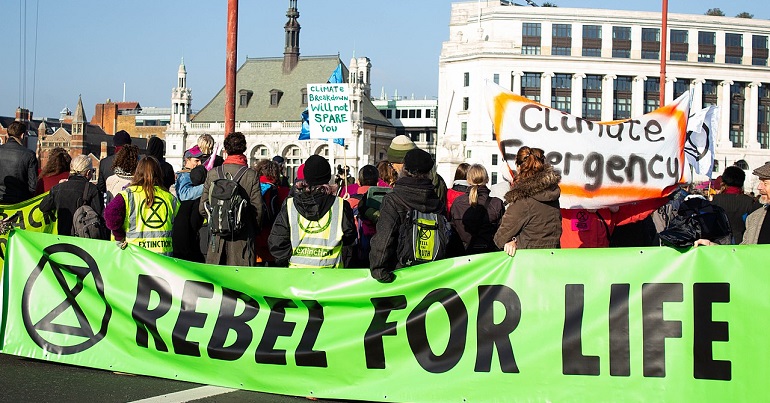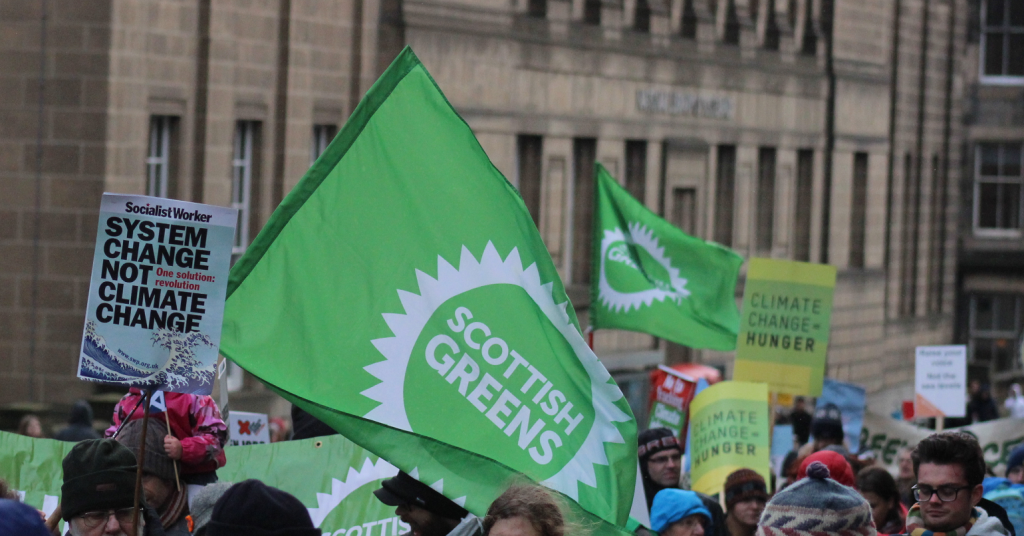Policing rebellion – Extinction Rebellion needs to understand power

Extinction Rebellion (XR) has succeeded over the last week at bringing parts of the country to a standstill and raising the climate crisis in the political agenda. But, their first week of large action shows that not all is clear in the climate justice movement.
Teething Trouble
XR should be commended for the way in which it has mobilised a large number of people across the country. Actions in UK cities have forced politicians to engage with climate breakdown, at least on the surface. For example, Conservative government figures have been scrambling to spin their environmental record as positive.
But this week of action has also shown a deeply worrying side of XR’s activism and theory. In multiple tweets which caused a large amount of controversy, XR said the following:
Most police are reasonable people. Some are idiots. No different to the rest of society. We hope that the police will soon join with the rebellion, either passively or actively, in a move that would force the government to the negotiating table.
— Extinction Rebellion Global (@ExtinctionR) April 16, 2019
These wonderful officers of the law are sisters, brothers, fathers, mothers, daughters & sons of someone. #HumansofXR just want to see the crisis treated like the #ClimateEmergency it is for their own families & friends. #InternationalRebellion #parliamentsquare https://t.co/Qj6v5bOWl3
— Extinction Rebellion Global (@ExtinctionR) April 17, 2019
Both tweets received immediate backlash, with XR tweeting a clarification in response. Alongside this there are concerns about protesters having conversations with “blue vested” officers, who’s role is information gathering. Police have also been dancing and skateboarding with protesters.
A number of activists who were arrested failed to consult legal advice and didn’t engage in the activity of “no comment” when interviewed, see this for example. This is something which some have argued is harmful to activism.
Greens and Blues
XR’s current strategy seems to be based on the belief that enough individuals, and hopefully police, will defect and join them. Whilst I don’t wish to advocate a certain approach to the police and other expressions of state power, it is clear that this strategy is problematic for a number of reasons.
Firstly, there is a long history of police forces being used to undermine environmental groups in the UK. Be it through listing environmental activists as security threats, the use of undercover police, or shutting off communication methods to prevent organisation. As the disruption continues, XR will have to contend with how to deal with the escalation of these tactics. Without proper care, the movement may collapse.
Additionally, XR’s approach to mass arrest and police mobilisation demonstrates a blind spot when it comes to the privilege many XR activists hold. The increase in police presence in cities in the UK that XR invites is problematic for people of colour and other marginalized groups who the police have consistently represented a threat to. An excellent discussion of this was published by Gal-Dem.
Trouble Brewing
As XR’s activities continue, the strategy of hoping that state power will come on side with sufficient spectacle, disruption, and messaging may show itself to be too optimistic. As shown by their recent press release, the Met Police continue to take a strong line to the occupation of public spaces. Sajid Javid additionally urged that the police should “use the full force of the law.” XR needs to work out what it plans to do when this happens.
The lack of a coherent approach to the police reflects a wider problem that XR faces. What happens if those in control of political and financial powers refuse to engage with their message? If disruption isn’t enough to undermine the denialist aspects of our current system, XR may hit a wall in its aim to prevent catastrophic climate breakdown.
Spectacular History
XR attempts to present itself as outside the fold of other environmental groups, for example by occupying Greenpeace offices. Yet I believe at this stage it is simply a continuation of tactics, albeit at a different scale. There is a long line of environmental action focused on creating public spectacle and disruption.
Greenpeace’s early successes relied heavily on publicity, be this through sailing the Phyllis Cormack into the Amchitka nuclear testing zone, or David McTaggart being beaten on film in 1972. Alongside this, Earth First! and other groups engaged in disruptive sabotage tactics for the environment at the end of the 20th Century.
The occupation of public space with a giant pink boat, the gluing of activists to public places, and ultimately the strategy of mass arrest raises environmental issues on the agenda. But this has always been the case.
Sadly, our economic and political system has weathered worse. This is a system that saw off both the Occupy movement at the start of this decade, as well as the WTO protests in 1999. Whilst the scale of XR is refreshing, the tactics are not as new as often presented.
Environmental movements like XR at this critical juncture, need to face the reality of powerful opposition. There are figures in the police, in control of capital and in politics who will always be opposed to climate action, public participation, and system change. XR seems to have no suggestion about how to prevent this exercise of power. Nor does it have a clear agenda for how power should be redistributed to people.
Demanding the Future
The three demands of XR show this problem at its forefront. XR demands the “government declaring a climate and ecological emergency” and that the “government must act now to halt biodiversity loss and reduce greenhouse gas emissions.” Yet XR also makes the ambitious demand for a national Citizen’s Assembly on climate and ecological justice.
Does XR want citizen power over environmental issues, or does it want the government to take the regulatory lead? The solving of this conundrum is key to whether XR becomes more than the many spectacle based environmental groups before it.
XR deserves support for the successes it has achieved in such a short time, and these thoughts are not meant to undermine the movement. A lot of action and response has been spontaneous, and this needs to be used constructively to achieve climate justice. Hopefully XR will develop a coherent and effective approach to those powerful enough to stop its movement.
An injection of praxis into the XR movement will perhaps turn it into something unseen in the history of environmental activism, namely a success.




My own experience is that because the aim and the rightness of XP is so clear, ie to stop further climate change quickly, as against the vague unconvincing government line of hoping that maybe private enterprise may stop it with sales of solar panels, electric cars, large almost all foreign companies building wind turbines etc many more people are likely to support it from all political beliefs than for instance occupy.
Once involved so far XP have been exemplary in supporting the “Rebels” and the organisation, success,comradeship and good will has been so incredibly moving and heartfelt that most people joining in, perhaps ,as myself not sure about XR’s practical effectiveness have been imv highly inspired, energised, motivated to stay and further promote XR locally.. As I understand it the clear agenda to deal with the problems you highlight are to deal with them through citizens assemblies.
I am very hopeful that XR will grow , and I pressurise industry and Political will to seriously address how we are going to rapidly decarbonise our society.